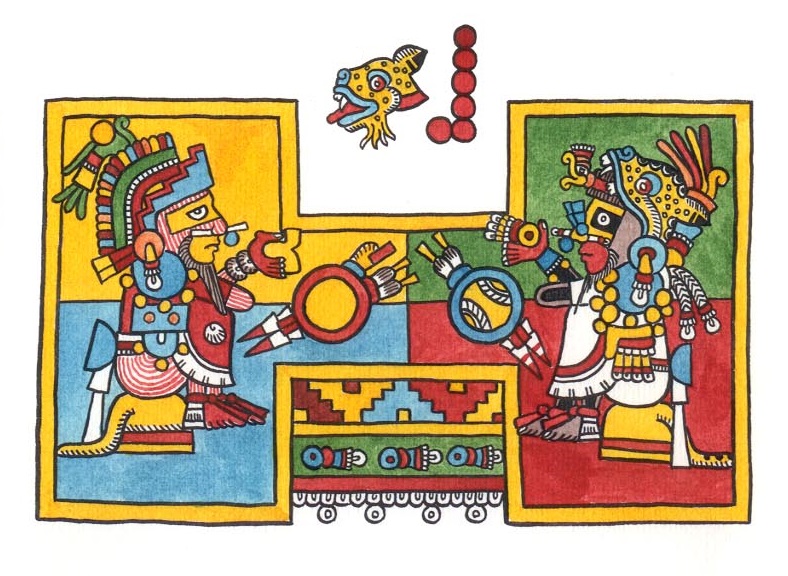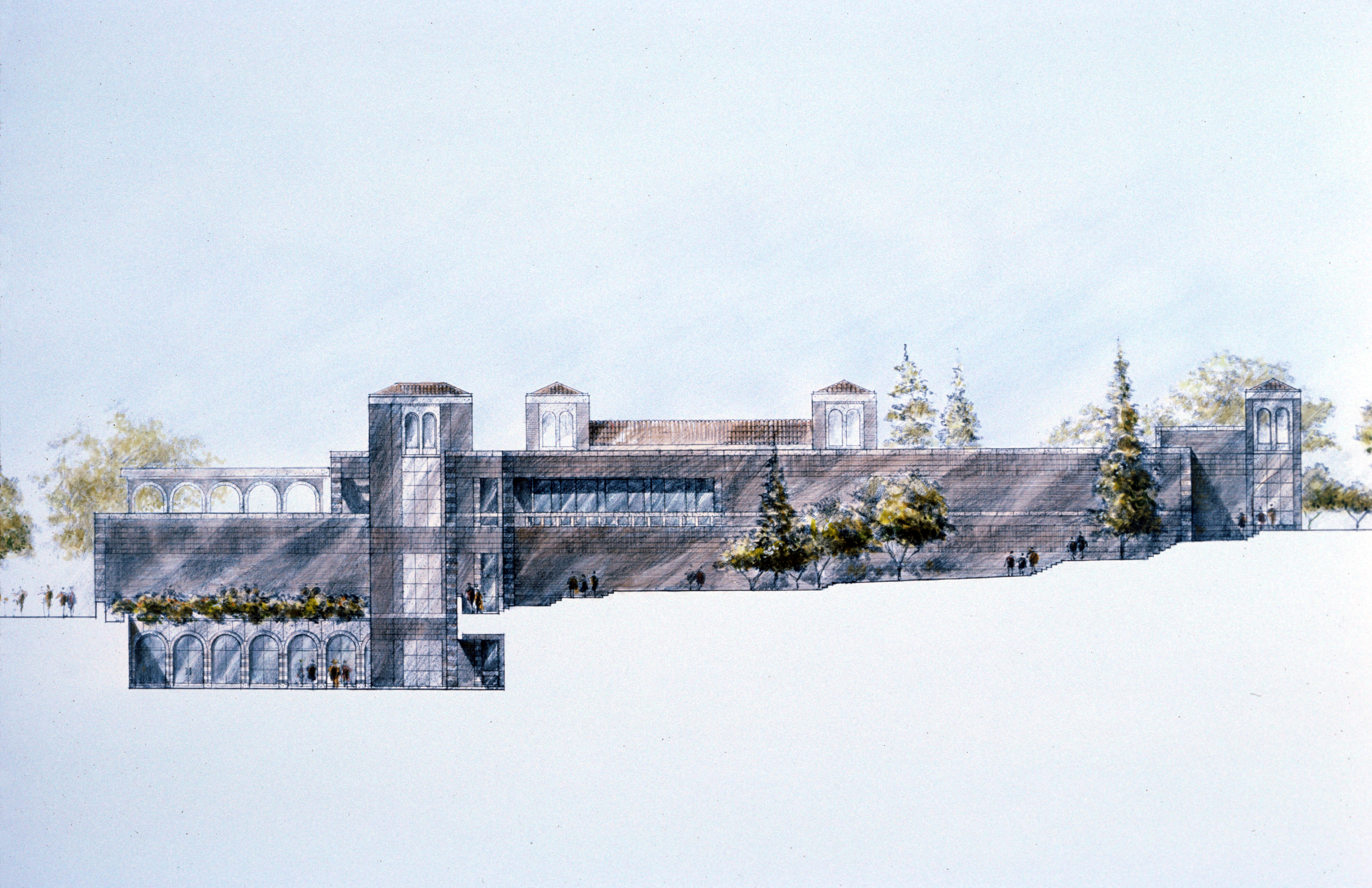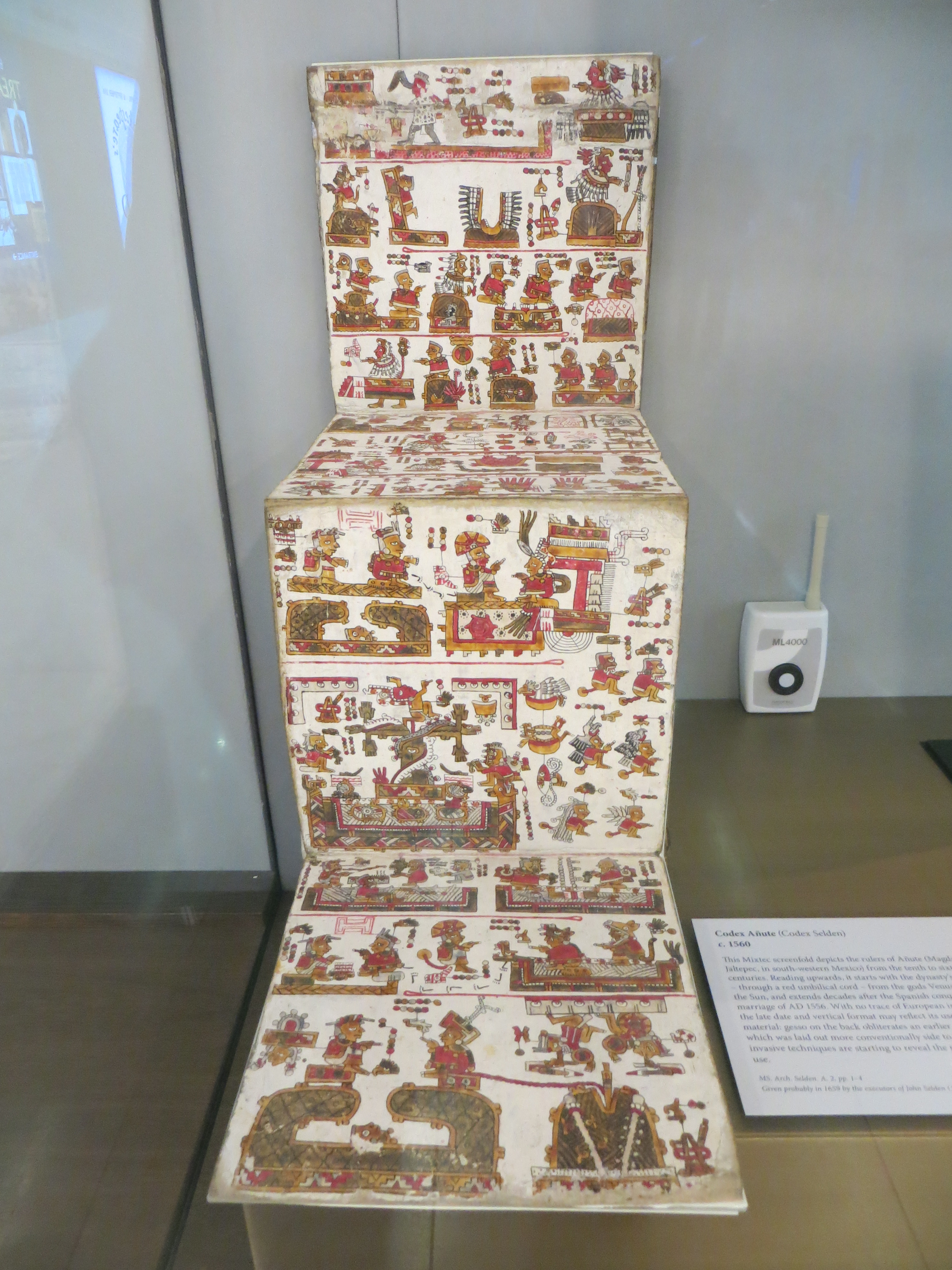|
Lady Six Monkey
Lady Six Monkey (Mixtec: ''Ñuñuu Dzico-Coo-Yodzo''; born before 1073 – died 1101) was a queen of the Mixtec city-state of Red and White Bundle, Huachino ("Red and White Bundle" or "Bundle of Xipe") from approximately 1089 to 1101 in present-day Mexico. She controlled Huachino as its co-ruler alongside her husband, Lord Eleven Wind. Lady Six Monkey was also the Heir apparent, heir to the throne of the city state of Jaltepec ("Belching Mountain"), through her descent from queen regnant Lady Nine Wind. Lady Six Monkey's career is described in many contemporary documents, particularly the Codex Selden. She is best known for her conflict against Eight Deer Jaguar Claw, a struggle that John M. D. Pohl of the Fowler Museum at UCLA, Fowler Museum has described as "an Iliad of the Mixtec people". Life Six Monkey was born to Lady Nine Wind and Lord Ten Eagle, the rulers of Jaltepec, at some point before 1073.Williams, p. 179.Jansen et al., 374. She was the oldest surviving child of the ... [...More Info...] [...Related Items...] OR: [Wikipedia] [Google] [Baidu] |
Codex Zouche-Nuttall
The Codex Zouche-Nuttall or Codex Tonindeye is an accordion-folded pre-Columbian document of Mixtec pictography, now in the collections of the British Museum. It is one of about 16 manuscripts from Mexico that are entirely pre-Columbian in origin. The codex derives its name from Zelia Nuttall, who first published it in 1902, and Baroness Zouche, its donor. Description The Codex Zouche-Nuttall was probably made in the 14th century and is composed of 47 sections of animal skin with dimensions of 19 cm by 23.5 cm. The codex folds together like a screen and is vividly painted on both sides, and the condition of the document is by and large excellent. It is one of three codices that record the genealogies, alliances and conquests of several 11th and 12th century rulers of a small Mixtec city-state in highland Oaxaca, the Tilantongo kingdom, especially under the leadership of the warrior Lord Eight Deer Jaguar Claw (who died in the early twelfth century at the age of fifty-two ... [...More Info...] [...Related Items...] OR: [Wikipedia] [Google] [Baidu] |
Eight Deer Jaguar Claw
Eight Deer Jaguar Claw (), or Eight Deer for brevity, was a powerful Mixtec ruler in 11th-century Oaxaca referred to in the 15th-century deerskin manuscript Codex Zouche-Nuttall, and other Mixtec Group, Mixtec manuscripts. His surname is alternatively translated ''Tiger-Claw'' and ''Ocelot-Claw''. John Pohl has dated his life spanning from 1063 until his assassination in 1115. Biography Born on the Mixtec Calendar date from which he got his name, Eight Deer was the son of the high priest of Tilantongo Lord 5 Alligator 'Sun Rain', Lord Five Alligator Sun Rain. His mother was Lady 11 Water 'Bird Jewel', Lady Eleven Water Bird Jewel. Two of his brothers, Twelve Earthquake Bloody Jaguar and Nine Flower Copal Ball with Arrow, were his faithful war companions. He also had a half-sister, Six Lizard Jade Fan. First the fiancée and lover of Eight Deer himself, she was ultimately married to Eight Deer's archenemy Eleven Wind Bloody Jaguar, the king of the city Xipe Totec, Xipe's Bundle, a ... [...More Info...] [...Related Items...] OR: [Wikipedia] [Google] [Baidu] |
11th-century Queens Regnant
The 11th century is the period from 1001 (represented by the Roman numerals MI) through 1100 (MC) in accordance with the Julian calendar, and the 1st century of the 2nd millennium. In the history of Europe, this period is considered the early part of the High Middle Ages. There was, after a brief ascendancy, a sudden decline of Byzantine power and a rise of Norman domination over much of Europe, along with the prominent role in Europe of notably influential popes. Christendom experienced a formal schism in this century which had been developing over previous centuries between the Latin West and Byzantine East, causing a split in its two largest denominations to this day: Roman Catholicism and Eastern Orthodoxy. In Song dynasty China and the classical Islamic world, this century marked the high point for both classical Chinese civilization, science and technology, and classical Islamic science, philosophy, technology and literature. Rival political factions at the Song dynast ... [...More Info...] [...Related Items...] OR: [Wikipedia] [Google] [Baidu] |
1101 Deaths
Year 1101 ( MCI) was a common year starting on Tuesday of the Julian calendar. It was the 2nd year of the 1100s decade, and the 1st year of the 12th century. Events By place Byzantine Empire * Crusade of 1101 – A second wave of European crusaders attempts to cross Anatolia, to reach the Kingdom of Jerusalem. They are defeated by the Seljuk troops under Sultan Kilij Arslan I, at Heraclea. A handful of crusaders under Raymond IV manage to reach the Byzantine port of Bafra, at the mouth of the River Halys. * Summer – The Byzantine fleet under Admiral Eustathios recaptures the ports of western Cilicia, Seleucia and Corycus. Eustathios extends his power over Cilician territory (belonging to Bohemond I) further east – occupying Tarsus, Adana and Mamistra. Levant * Spring – King Baldwin I concludes an alliance with the Genoese fleet, offering them commercial privileges and booty. He captures the towns of Arsuf and Caesarea. Baldwin's crusad ... [...More Info...] [...Related Items...] OR: [Wikipedia] [Google] [Baidu] |
Tilantongo
Tilantongo was a Mixtec citystate in the Mixteca Alta region of the modern-day state of Oaxaca which is now visible as an archeological site near the modern town of Santiago Tilantongo. It is located at 17°15' N. Lat. and 97°17' W. Long. Its Mixtec name was ''Ñuu Tnoo-Huahi Andehui'' meaning Black Town-Temple of Heaven History Archeological excavations conducted by Alfonso Caso in the 1960s suggest that Tilantongo is among the oldest settlements in Oaxaca with architecture from the preclassic Monte Albán I phase. Preclassic and Classic remains were found at Monte Negro and the Postclassic settlement was located in the present day town of Tilantongo, slightly north of the Classic settlement. The documentary record shows that Tilantongo was an important Mixtec polity in the Postclassic period. Mixtec picture codices, such as the Codex Zouche-Nuttall and Codex Bodley, tell the history of Lord 8 Deer who ruled Tilantongo in the eleventh century, and how he linked the Tilanto ... [...More Info...] [...Related Items...] OR: [Wikipedia] [Google] [Baidu] |
Quechquemitl
The quechquemitl (also spelled quezquemitl) is a garment which has been worn by certain indigenous ethnicities in Mexico since the pre-Hispanic period. It usually consists of two pieces of rectangular cloth, often woven by hand, which is sewn together to form a poncho or shawl like garment, which is usually worn hanging off the shoulders. It can be constructed of various different fabrics, often with intricate weaves, and is typically highly decorated, most often with embroidery. In the pre-Hispanic period only women of high social rank were allowed to wear the quechquemitl. Since the colonial period, it has been adopted by various peoples, mostly living in central Mexico, for everyday wear, festival and rituals, but its use has declined. Construction and use The quechquemitl has been variously described as a shawl, a cape and a triangular cloth, despite only resembling these somewhat when worn. Most quechquemitls are two pieces of rectangular cloth sewn together, and most oft ... [...More Info...] [...Related Items...] OR: [Wikipedia] [Google] [Baidu] |
Chalcatongo
Chalcatongo de Hidalgo (also, Chalcatongo and Villa Hidalgo) is a municipality in the Mexican state of Oaxaca. It is part of the Tlaxiaco District in the south of the Mixteca Region. It is the birthplace of former Governor Ulises Ruiz Ortiz Ulises Ernesto Ruiz Ortiz (born April 9, 1958) is a Mexican politician and former governor of the State of Oaxaca. He took office in 2004 as a member of the Institutional Revolutionary Party (PRI). Early career In the 1997 mid-term election he .... References * Municipalities of Oaxaca {{Oaxaca-geo-stub ... [...More Info...] [...Related Items...] OR: [Wikipedia] [Google] [Baidu] |
Iliad
The ''Iliad'' (; , ; ) is one of two major Ancient Greek epic poems attributed to Homer. It is one of the oldest extant works of literature still widely read by modern audiences. As with the ''Odyssey'', the poem is divided into 24 books and was written in dactylic hexameter. It contains 15,693 lines in its most widely accepted version. The ''Iliad'' is often regarded as the first substantial piece of Western literature, European literature and is a central part of the Epic Cycle. Set towards the end of the Trojan War, a ten-year siege of the city of Troy by a coalition of Mycenaean Greece, Mycenaean Greek states, the poem depicts significant events in the war's final weeks. In particular, it traces the anger () of Achilles, a celebrated warrior, from a fierce quarrel between him and King Agamemnon, to the death of the Trojan prince Hector.Homer, ''Iliad, Volume I, Books 1–12'', translated by A. T. Murray, revised by William F. Wyatt, Loeb Classical Library 170, Cambridge, ... [...More Info...] [...Related Items...] OR: [Wikipedia] [Google] [Baidu] |
Fowler Museum At UCLA
The Fowler Museum at UCLA (commonly known as The Fowler, and formerly Museum of Cultural History and Fowler Museum of Cultural History) is a museum on the campus of the University of California, Los Angeles (UCLA) which explores art and material culture primarily from Africa, Asia and the Pacific, and the Americas, past and present. The Fowler is generally home to three to six art exhibitions and also acts as a venue for lectures on cultural topics, musical performances, art workshops, family programs, festivals and more. The Fowler is located in the northern part of UCLA's Westwood Campus, adjacent to Royce Hall and Glorya Kaufman Hall. The museum is operated under the jurisdiction of UCLA School of the Arts and Architecture. History The museum was established in 1963 by then UCLA Chancellor Franklin D. Murphy as the Museum and Laboratories of Ethnic Arts and Technology. Its first home was in the basement of Haines Hall on the UCLA campus. The goal of this new museum was to ... [...More Info...] [...Related Items...] OR: [Wikipedia] [Google] [Baidu] |
Codex Selden
The Codex Selden (also known as the Codex Añute) is a Mexican manuscript of Mixtec origin. The codex is an account of the genealogy of the Jaltepec dynasty from the tenth to the 16th century. Codex Selden is possibly a fragment of a much longer improperly stored document. Although it was completed after the arrival of the conquistadors in the Mixtec region, it is considered one of the six pre-Hispanic Mixtec codices that survived the Spanish conquest of the Aztec Empire. The last date mentioned in the Codex is 1556, which can be interpreted as the date when the codex was finished. The Codex belonged to the English jurist John Selden, who died in 1654 and left his collection of books and manuscripts at the University of Oxford. It is kept at the Bodleian Library in Oxford (shelfmark MS. Arch. Selden. A. 2). In the 1950s, an accidental scratch revealed that the Selden Codex might overlay an earlier document later covered over with a layer of gypsum and chalk, a palimpsest. But gi ... [...More Info...] [...Related Items...] OR: [Wikipedia] [Google] [Baidu] |
Mixtec
The Mixtecs (), or Mixtecos, are Indigenous Mesoamerican peoples of Mexico inhabiting the region known as La Mixteca of Oaxaca and Puebla as well as La Montaña Region and Costa Chica of Guerrero, Costa Chica Regions of the state of Guerrero. The Mixtec culture was the main Mixtec civilization, which lasted from around 1500 BCE until being conquered by the Spanish in 1523. The Mixtec region is generally divided into three subregions based on geography: the Mixteca Alta (Upper Mixtec or Ñuu Savi Sukun), the Mixteca Baja (Lower Mixtec or Ñuu I'ni), and the La Mixteca, Mixteca Costa (Coastal Mixtec or Ñuu Andivi). The Alta is drier with higher elevations, while the Baja is lower in elevation, hot but dry, and the Costa is also low in elevation but much more humid and tropical. The Alta has seen the most study by archaeologists, with evidence for human settlement going back to the Archaic period in Mesoamerica, Archaic and Early Mesoamerican chronology#Preclassic Era or Form ... [...More Info...] [...Related Items...] OR: [Wikipedia] [Google] [Baidu] |
Lady Nine Wind
''Lady'' is a term for a woman who behaves in a polite way. Once used to describe only women of a high social class or status, the female counterpart of lord, now it may refer to any adult woman, as gentleman can be used for men. "Lady" is also a formal title in the United Kingdom. "Lady" is used before the family name or peerage of a woman with a title of nobility or honorary title ''suo jure'' (in her own right), such as female members of the Order of the Garter and Order of the Thistle, or the wife of a lord, a baronet, Scottish feudal baron, laird, or a knight, and also before the first name of the daughter of a duke, marquess, or earl. Etymology The word comes from Old English '; the first part of the word is a mutated form of ', "loaf, bread", also seen in the corresponding ', "lord". The second part is usually taken to be from the root ''dig-'', "to knead", seen also in dough; the sense development from bread-kneader, or bread-maker, or bread-shaper, to the ordinary ... [...More Info...] [...Related Items...] OR: [Wikipedia] [Google] [Baidu] |






